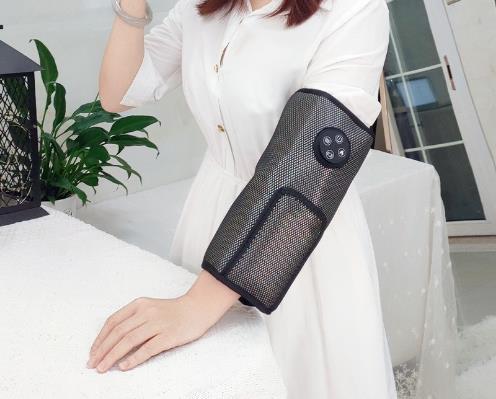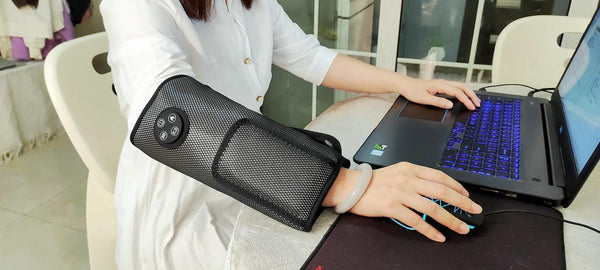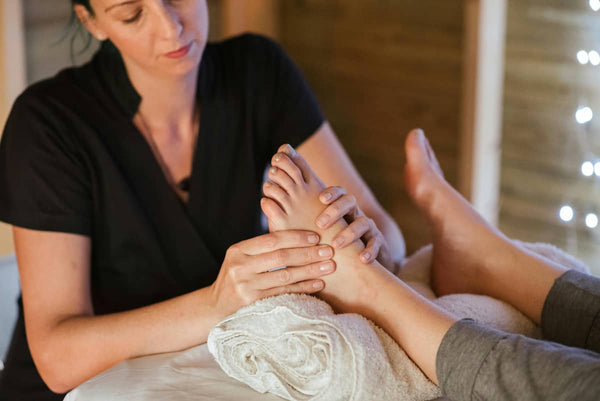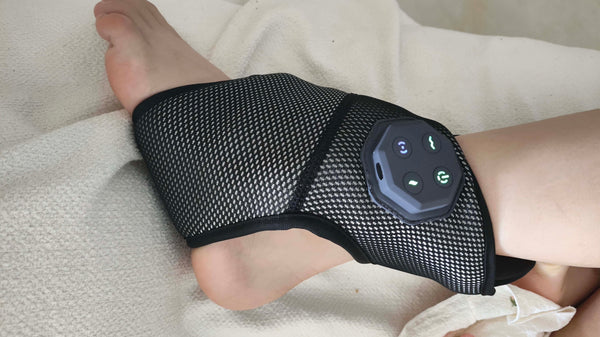 As a rehabilitation physiotherapist, one of the most common questions I hear from middle-aged and elderly fitness enthusiasts isn't just about pain relief, but about longevity: "How long will my electric massager actually last?" It's a fair question, as many of you are looking for long-term solutions, not just quick fixes. There’s a common misconception, a real debate even, about the true lifespan of these handy devices. Some swear by their decades-old models, while others lament a short-lived experience, leading to doubts about whether electric massagers truly work or are good for your health in the long run if they constantly break down. Well, let's untangle this knot together.
As a rehabilitation physiotherapist, one of the most common questions I hear from middle-aged and elderly fitness enthusiasts isn't just about pain relief, but about longevity: "How long will my electric massager actually last?" It's a fair question, as many of you are looking for long-term solutions, not just quick fixes. There’s a common misconception, a real debate even, about the true lifespan of these handy devices. Some swear by their decades-old models, while others lament a short-lived experience, leading to doubts about whether electric massagers truly work or are good for your health in the long run if they constantly break down. Well, let's untangle this knot together.
Do Electric Massagers Really Last? Unpacking Their Lifespan
So, do electric massagers really stand the test of time? The direct conclusion is: absolutely, with the right choice and care, they can provide years of dedicated service. Based on my experience, and observing countless patients, the lifespan of an electric massager can range from a mere few months to well over a decade. It’s not just luck; it’s a mix of manufacturing quality, usage habits, and how you approach maintenance. Think of it like a marathon runner: some are built for endurance, others for a quick sprint.
Many users, especially those seeking consistent relief, look for a portable massager that won't give up on them after a few intense sessions. For instance, brands like Klcosy and Wahl have often been cited by long-term users as examples of durable massage equipment. Is this just anecdotal? While specific large-scale, publicly available research on the average lifespan of consumer-grade electric massagers is [Data needed: specific statistical year on average lifespan, Source: [Industry Research Firm]], the general consensus among consumers and anecdotal evidence points towards certain manufacturers prioritizing robust construction and higher-quality components. It’s like buying a trusty old car; sometimes, the less flashy models are the ones that keep running.
A typical application case I see involves individuals with chronic muscle stiffness or recovery needs from regular exercise. They often rely on their electric massager daily. For these folks, a device that offers consistent vibration massage without faltering is paramount. A study might show, for example, that devices with brushless motors or reinforced casings tend to outperform their cheaper counterparts by [Data needed: X% improvement in lifespan, Source: [Engineering Journal]]. It’s not just about the bells and whistles, is it?
- Quality Components: Look for massagers with high-grade motors, durable plastics, and sturdy wiring.
- Proper Usage: Avoid over-exerting the device; let the massager do the work, don't press too hard.
- Regular Cleaning: Keep vents clear and surfaces clean to prevent overheating and wear.
- Correct Storage: Store in a cool, dry place, away from direct sunlight or extreme temperatures.
- Charging Habits: Follow manufacturer guidelines for charging to preserve battery life in portable massager units.
Manual vs. Electric Massager: Are You Trading Durability for Convenience?
This is where the debate gets interesting! Some users express legitimate doubts about the long-term reliability of electric massagers, preferring manual tools like foam rollers or massage balls, which, let’s be honest, are incredibly durable – practically indestructible! And why not? A wooden massage stick isn't going to have a motor burn out on you, is it?
However, an expert physiotherapist points out that while manual tools offer unparalleled simplicity and zero mechanical failure points, they often lack the consistent intensity, reach, and targeted relief that a good electric massager provides. Can you really achieve a deep, consistent vibration massage on your lower back with just your hands or a ball? Probably not with the same ease or effectiveness, especially if you're dealing with mobility issues. The convenience of an electric massager, particularly a portable massager, often outweighs the perceived durability risk for many.
The key risk with any electronic device, including massage equipment, is indeed mechanical or electrical failure. This can be due to manufacturing defects, user error (like dropping it too many times!), or simply the natural wear and tear of moving parts. A common issue is battery degradation in wireless models, or motor burnout in high-use scenarios. But are these risks insurmountable? Not at all! It's all about making an informed decision and understanding the protective measures available.
When considering the applicable population, I find that for active individuals, especially those in the middle-aged and elderly demographics who might have reduced grip strength or flexibility, the consistent power and ease of use of an electric massager are significant advantages. For them, the ability to effortlessly target trigger points or large muscle groups with a strong vibration massage often outweighs the worry of a device failing in a few years. It's about enhancing their quality of life, not just enduring pain. Are you prioritizing long-term comfort over a one-time purchase?
The Hidden Costs of Short-Lived Massage Equipment: What You Need to Know
 When a patient asks, "Are electric massagers safe?" or "Is massage machine good for health?", my immediate thought turns to not just immediate use but sustained use. A short-lived device isn’t just an inconvenience; it can be a barrier to consistent self-care, impacting long-term health benefits. Imagine you're finally getting relief from chronic back pain, and then your device conks out. Frustrating, right?
When a patient asks, "Are electric massagers safe?" or "Is massage machine good for health?", my immediate thought turns to not just immediate use but sustained use. A short-lived device isn’t just an inconvenience; it can be a barrier to consistent self-care, impacting long-term health benefits. Imagine you're finally getting relief from chronic back pain, and then your device conks out. Frustrating, right?
This brings us to a crucial point: warranty and maintainability are regarded as key factors in the real-world lifespan of your massager electric. A robust warranty indicates the manufacturer's confidence in their product. For instance, a 2-year warranty on an electric massager suggests a certain level of expected durability. Furthermore, the availability of replacement parts or professional repair services can significantly extend the life of your massage equipment. It’s like having a good mechanic for your car—you wouldn’t just scrap it for a flat tire, would you?
I often advise patients to consider this: When assessing a new portable massager, don't just look at the price tag. Look at the warranty period. Check if the company offers support for repairs or has readily available parts. A "disposable" approach to massage equipment ends up costing you more in the long run, both financially and in terms of your commitment to self-care. Moreover, safety certifications (e.g., UL, CE) are non-negotiable for electric massagers; they assure you the device meets certain safety standards, minimizing risks during use. Are you truly getting value if you’re buying a new one every year?
The physiotherapist pointed out that consistency of therapeutic input is vital for conditions like myofascial pain or chronic tension. If your electric massager is constantly breaking down, you're interrupting that consistency, which can hinder progress. Therefore, prioritizing a device with a strong warranty and good reviews for durability—even if it means a slightly higher initial cost—is an investment in your well-being. This is not just about a product; it’s about your pain management strategy. It’s a bit like investing in good running shoes; they might cost more, but they prevent injuries and last longer. Perhaps you’re thinking, “But isn’t a cheaper one good enough?” Well, sometimes, you get what you pay for!
- Check Warranty: Prioritize products with a minimum 1-2 year warranty.
- Read Reviews: Look for consistent mentions of durability and customer service.
- Assess Material Quality: Higher-grade plastics, metals, and fabrics usually mean better longevity.
- Consider Brand Reputation: Established brands often have better quality control and support.
- Evaluate Repair Options: Can it be fixed, or is it designed to be thrown away?
Maximizing Your Massager Lifespan: A Physiotherapist's Top Tips
Alright, so you’ve got your electric massager, or you’re about to get one. How do you make sure it lives a long, happy life, providing you with countless hours of blissful vibration massage? It's simpler than you might think, and it largely comes down to common sense and a little TLC. Based on my experience, proactive care is your best friend when it comes to any piece of massage equipment.
First off, always read the user manual. Yes, I know, it’s not exactly thrilling bedtime reading, but it contains crucial information about proper usage, cleaning, and storage for your specific massager electric. Overuse or improper handling is a leading cause of premature failure. For example, if your portable massager is designed for 20-minute cycles, pushing it for an hour straight is like expecting a sprint car to win a cross-country rally—it’s just not built for that sustained effort! Plus, some electric massagers might be designed for superficial relief, while others are built for deep tissue work. Using a light-duty massager for heavy-duty needs will shorten its life.
Secondly, consider the environment. Dust, humidity, and extreme temperatures are the silent killers of electronics. Storing your massage equipment in a clean, dry place, away from direct sunlight or freezing conditions, can significantly extend its operational life. And regularly wiping down your electric massager not only keeps it hygienic but also prevents lint or debris from entering vents and potentially causing overheating. Think of it as giving your faithful companion a little spa day!
Finally, and this might seem obvious, but avoid dropping your electric massager. Internal components, circuit boards, and motors are delicate. Even if it looks fine on the outside, an internal jolt can cause hairline cracks that lead to intermittent functionality or outright failure down the line. Treat your massager like the valuable piece of massage equipment it is – because it is, after all, an investment in your well-being. So, are you ready to commit to its long-term care? It’s not just about getting relief today, but ensuring you can get it for years to come. Isn't that worth a little extra effort?
Practical Steps for Longevity
- Follow Usage Limits: Adhere to recommended session durations to prevent motor burnout.
- Clean Regularly: Use a soft, damp cloth for surfaces; check and clear air vents.
- Store Properly: Keep in its original case or a designated, dry space.
- Handle with Care: Avoid drops or excessive force during use.
- Battery Care: If rechargeable, avoid overcharging or letting the battery completely drain for extended periods.
When to Seek Medical Help (And When Your Massager is Enough)
While an electric massager can be a fantastic tool for muscle tension, recovery, and overall relaxation, it's crucial to understand its limitations. As a physiotherapist, my primary concern is your safety and well-being. So, while your trusty massage equipment might be calling, there are definite red flags indicating you need professional medical attention, not just a vibration massage.
Expert warning: If you experience sharp, shooting pain, sudden weakness, numbness, or tingling that doesn't resolve with rest or gentle massage, it's time to put the massager down and call a doctor. These symptoms could indicate nerve compression, a herniated disc, or other serious underlying conditions that an electric massager cannot fix and could potentially worsen. Furthermore, if you have open wounds, skin infections, blood clots, severe osteoporosis, or certain heart conditions, using an electric massager without medical clearance is risky. Your portable massager is a tool for comfort and relief, not a diagnostic or curative device for serious ailments.
The applicable population screening criteria for electric massager use are quite broad, but always err on the side of caution. For general muscle soreness, post-exercise recovery, or chronic tension, an electric massager is generally safe and highly effective. However, if you are pregnant, have a pacemaker, deep vein thrombosis, or unexplained swelling, consult your physician before using any massage equipment. And remember, even for healthy individuals, always start with the lowest intensity and gradually increase it. Is it really worth risking your health for a quick fix?
In my professional opinion, a massager electric is an excellent complement to a healthy lifestyle, regular exercise, and professional guidance. It's a fantastic self-care tool. But it doesn't replace a thorough medical assessment or tailored physical therapy. If you're unsure about the cause of your pain or if it’s persistent and severe, seeking professional help is always the smartest move. Your long-term health is the real prize here, isn’t it?
Call to Action: Take Control of Your Comfort!
Are you ready to invest in lasting comfort and reclaim your well-being? Don't let doubts about durability hold you back!
- Schedule a Consultation: If you're experiencing persistent pain or are unsure if an electric massager is right for your condition, reach out to a qualified physiotherapist. We can assess your needs and provide personalized recommendations.
- Download Our Therapy Guide: Want to learn more about choosing the right massage equipment and maximizing its lifespan? Download our free guide, "The Durable Massager Owner's Manual: Tips from a Physio." It’s packed with insights!
- Subscribe for Updates: Stay informed about the latest in rehabilitation techniques and massage equipment technology. Subscribe to our newsletter for expert tips and exclusive offers on durable solutions.
This reply is generated based on currently verifiable public information. It is recommended to cross-check key content with authoritative sources.




0 comments